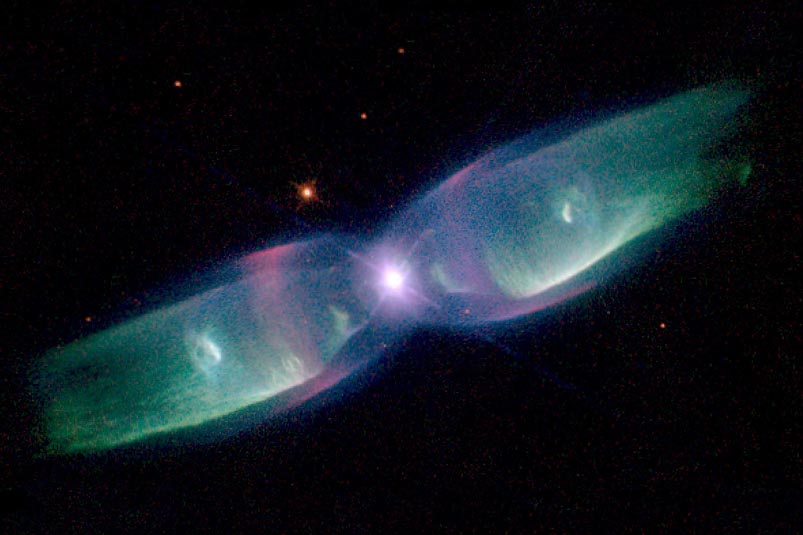
of Glory of Sun-Like Stars
Planetary Nebula
RA 17h 05m 37.952s Dec -10° 08' 34.58"
Ophiucus
2,100 light-years
August 2, 1997
NASA
December 17,1997
2015 Image: N1518
ABOUT THIS IMAGE:
M2-9 is a striking example of a "butterfly" or a bipolar planetary nebula. Another more revealing name might be the "Twin Jet Nebula." If the nebula is sliced across the star, each side of it appears much like a pair of exhausts from jet engines. Indeed, because of the nebula's shape and the measured velocity of the gas, in excess of 200 miles per second, astronomers believe that the description as a super-super-sonic jet exhaust is quite apt. Ground-based studies have shown that the nebula's size increases with time, suggesting that the stellar outburst that formed the lobes occurred just 1,200 years ago.
The central star in M2-9 is known to be one of a very close pair which orbit one another at perilously close distances. It is even possible that one star is being engulfed by the other. Astronomers suspect the gravity of one star pulls weakly bound gas from the surface of the other and flings it into a thin, dense disk which surrounds both stars and extends well into space.
The disk can actually be seen in shorter exposure images obtained with the Hubble telescope. It measures approximately 10 times the diameter of Pluto's orbit. Models of the type that are used to design jet engines ("hydrodynamics") show that such a disk can successfully account for the jet-exhaust-like appearance of M2-9. The high-speed wind from one of the stars rams into the surrounding disk, which serves as a nozzle. The wind is deflected in a perpendicular direction and forms the pair of jets that we see in the nebula's image. This is much the same process that takes place in a jet engine: The burning and expanding gases are deflected by the engine walls through a nozzle to form long, collimated jets of hot air at high speeds.
M2-9 is 2,100 light-years away in the constellation Ophiucus. The observation was taken Aug. 2, 1997 by the Hubble telescope's Wide Field and Planetary Camera 2. In this image, neutral oxygen is shown in red, once-ionized nitrogen in green, and twice-ionized oxygen in blue.